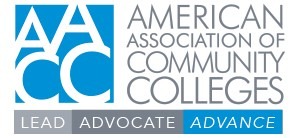DataPoints: Federal direct student loans
The federal government disbursed roughly $88 billion in new federal loans in the 2023-24 fiscal year (July 1, 2023, to June 30, 2024).
Based on data from the U.S. Education Department’s Integrated Postsecondary Education Data System (IPEDS), 88.5% of all postsecondary institutions had students enrolled who received a federal loan, while 86.7% of public community colleges had students enrolled who received federal loans.
One-hundred twenty-four public community colleges did not participate in the federal loan program or had no students who took out loans. Conversely, virtually every public four-year college (99.5%) had students accessing federal loans. Only two tribal colleges participated nationwide.
Community college students are also the least likely to have a federal loan. Based on the IPEDS data, only 9.9% of public community college students had a federal loan in the 2022-23 academic year, compared to one-third (33.7%) of students attending public four-year institutions, 43.4% of students attending independent four-year institutions, and more than half (55.8%) of students attending for-profit institutions.
Types of federal loans
There are five primary types of federal loans:
- Direct loans to undergraduates that are subsidized (interest does not accrue while the student is enrolled)
- Direct loans to undergraduates that are not subsidized (interest accrues while the student is enrolled)
- Direct loans to graduate students that are not subsidized (interest accrues while the student is enrolled)
- Parent PLUS loans made to parents of undergraduate students
- Grad PLUS loans made directly to graduate students (Neither of the PLUS loan programs is subsidized)
All federal student loans are originated by the federal government. Some students also access loans from banks and other private lenders that are not included in this data.
Overall, 84% of the loans were made to undergraduate recipients; however, undergraduate loans only accounted for 54% of the federal loan dollars disbursed. Unsubsidized undergraduate loans were the most awarded type of loan (40% of all loans), while subsidized student loans were almost as frequently awarded (38% of all loans). However, only $1 out of every $5 awarded was a subsidized direct loan, and $1 out of every $5 awarded was an unsubsidized direct loan (see Figure 1, above).
The average loan amount for community college borrowers was lower across all loan types (see Figure 2, below). However, this was likely due to the way Direct loans are structured. Loan limits for subsidized and unsubsidized loans are lowest for first-year undergraduates, and highest for third-year undergraduates and beyond. In addition, Parent PLUS loans are limited to the cost of attendance at the institution, minus any other financial assistance received, and community colleges tend to have the lowest cost of attendance so their average Parent Plus loans are smaller.
Figure 3 (below) explores the relationship between the number of recipients and loan amounts disbursed for undergraduate loans by type of institution. Across all undergraduate loan types, community college students received 11.4% of the loans, but only 7.9% of the funds that were disbursed. Independent four-year colleges, on the other hand, had 24.8% of the loans, but 29.7% of the dollars that were disbursed.
Very few (2.0%) of the undergraduate Parent PLUS loans went to community college students, accounting for only 1.2% of the Parent PLUS loan dollars disbursed. Reflecting the higher average loan amount in Table 2 above, for-profit colleges had only 20.9% of the unsubsidized loans, but 24.4% of the funds that were disbursed for this type of loan.
These data reflect the current borrowing and loan origination policies for colleges and universities. Recently enacted budget reconciliation legislation makes significant changes to annual, aggregate and lifetime loan limits for graduate, professional, and Parent PLUS borrowers.
The law also prorates annual borrowing limits for undergraduate students based on enrollment intensity and gives institutions new authority to limit annual loan limits based on program. These changes will take effect for the 2026-27 award year and will modify the amount of loans disbursed and their distribution across sectors.
All DataPoints
DataPoints: College Price
DataPoints: College Readiness
DataPoints: Completion
DataPoints: Enrollment
DataPoints: Financial Aid
DataPoints: Finance
DataPoints: Leadership
DataPoints: Outcomes
DataPoints: STEM
DataPoints: Transfer
DataPoints: Workforce
